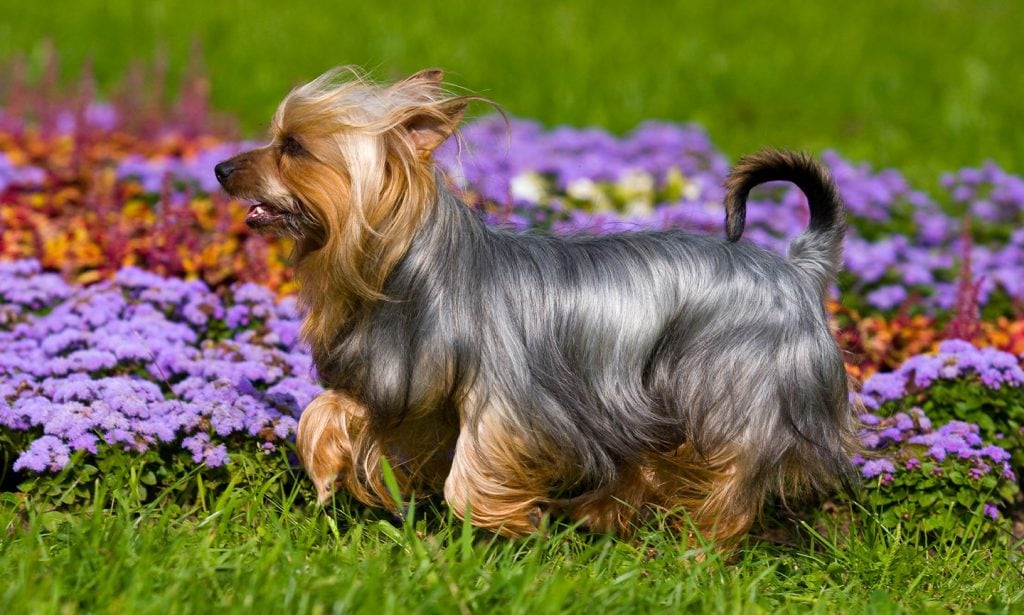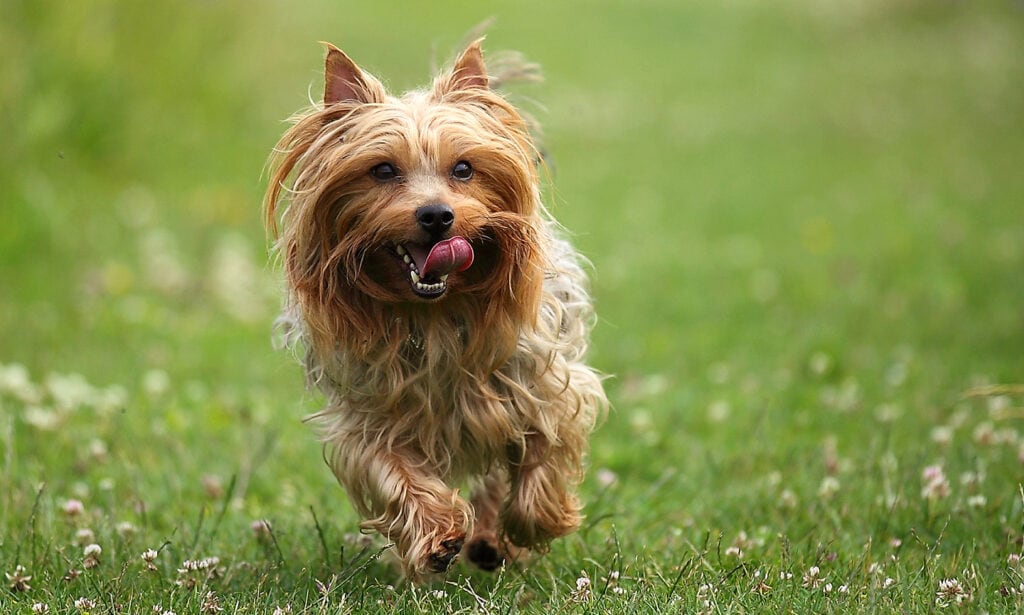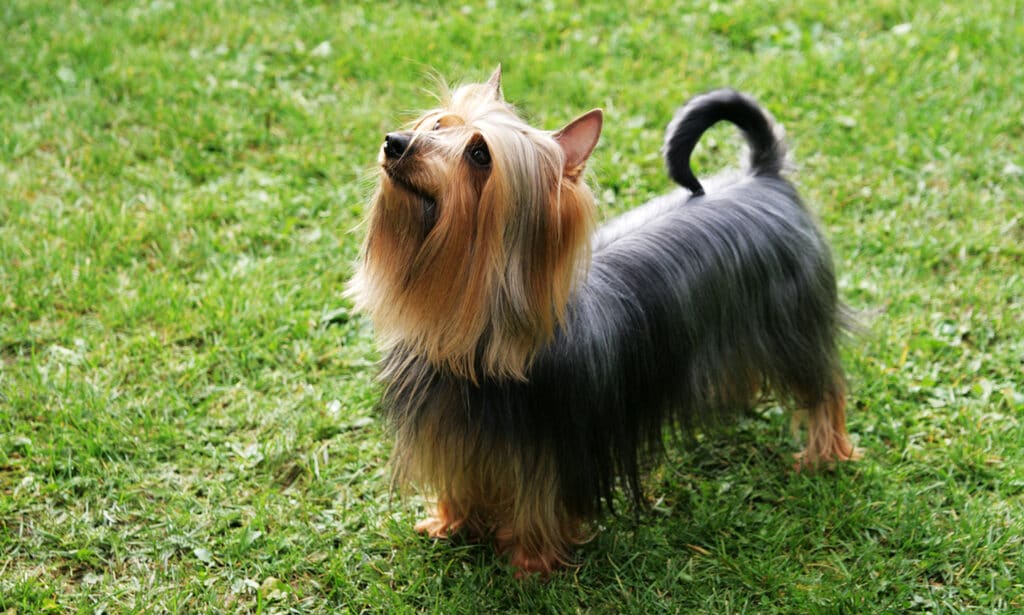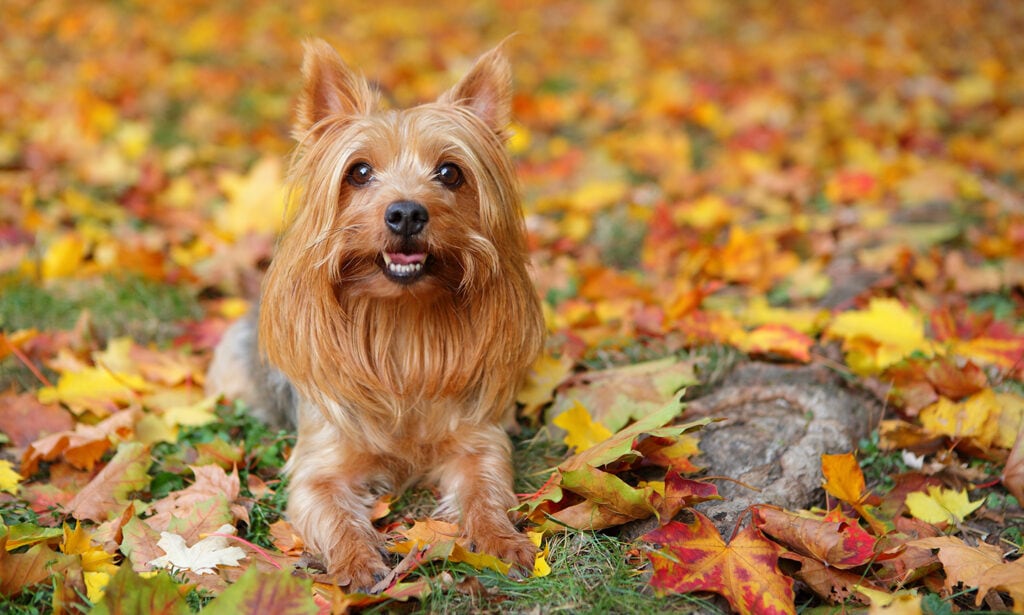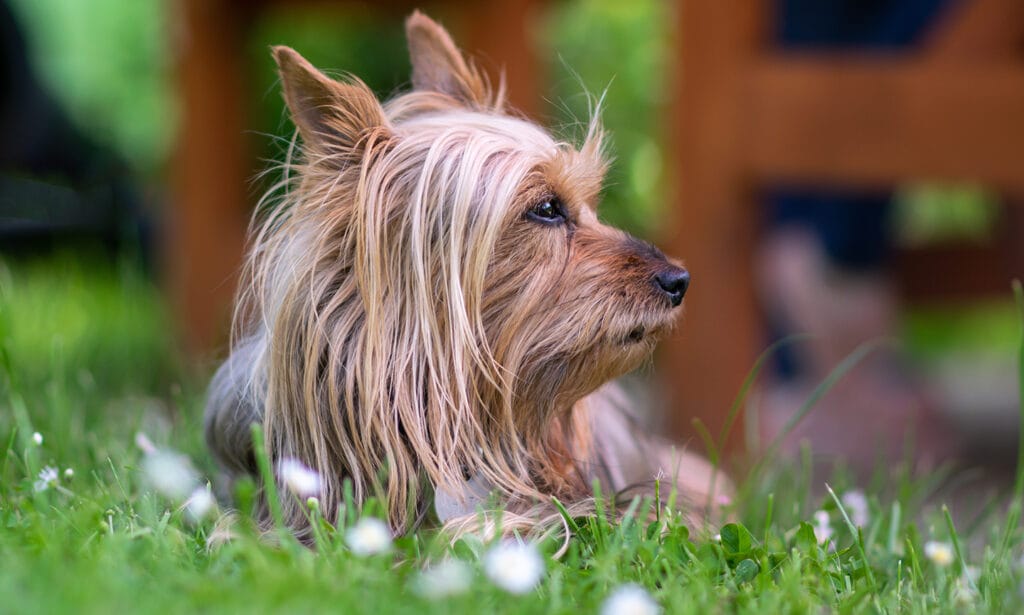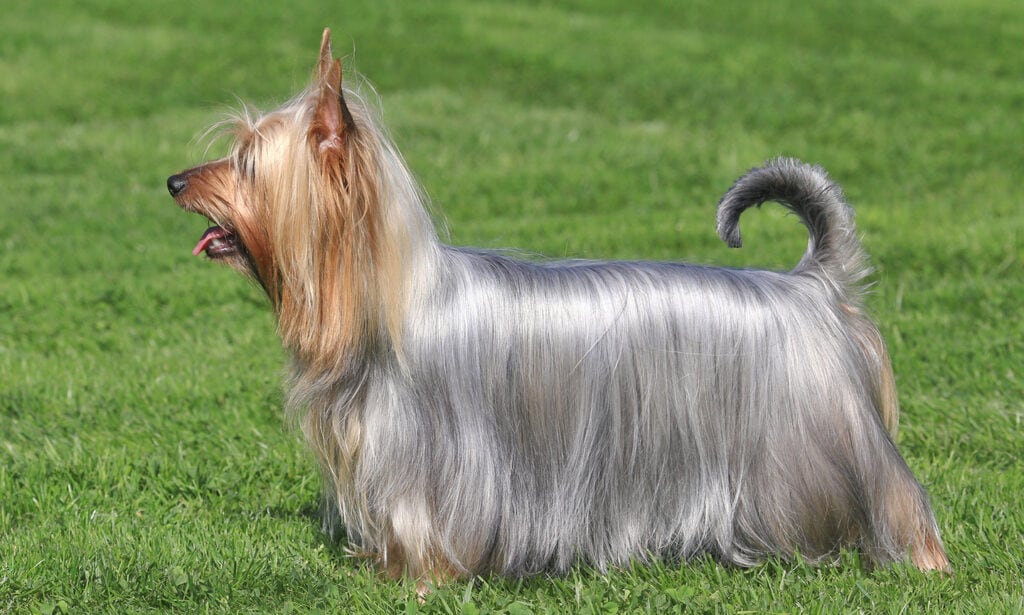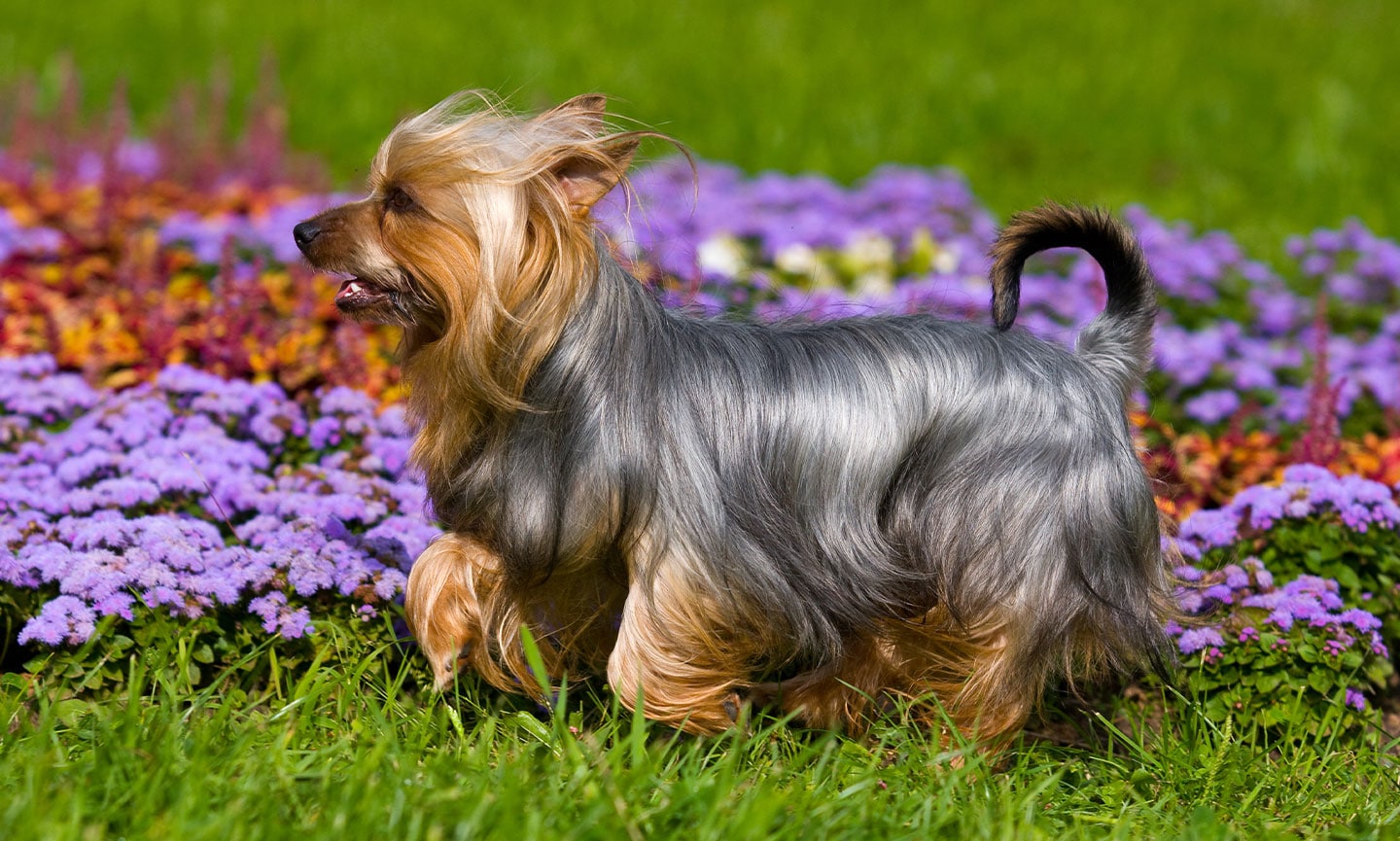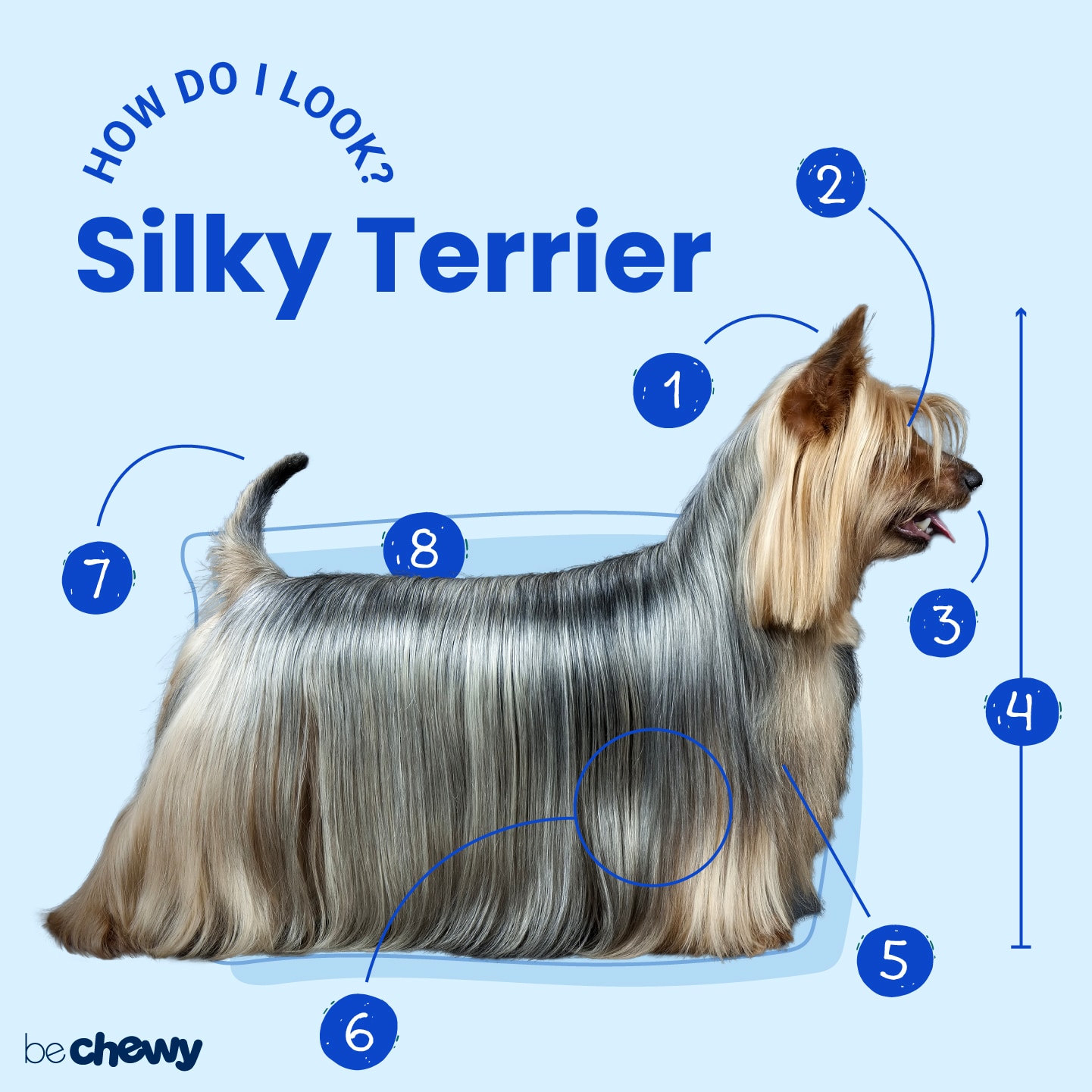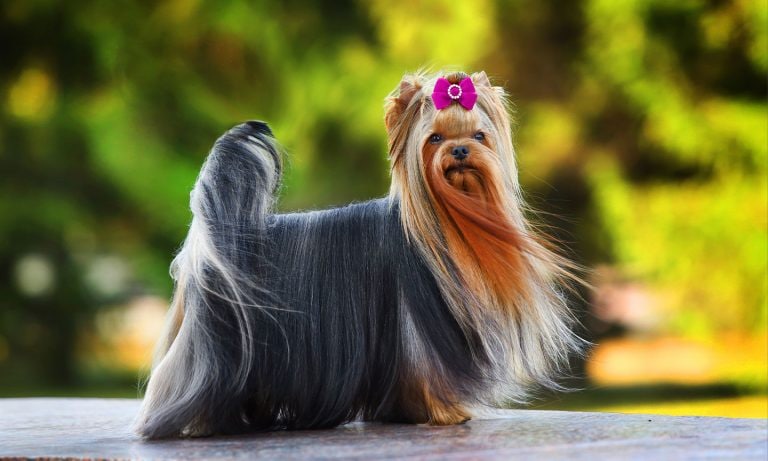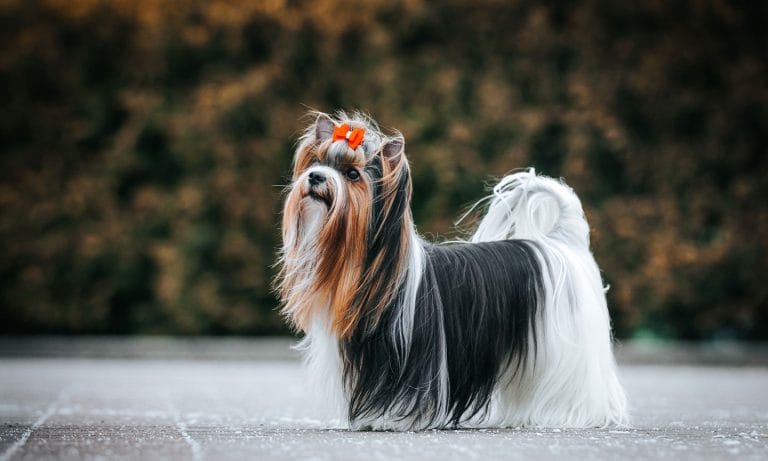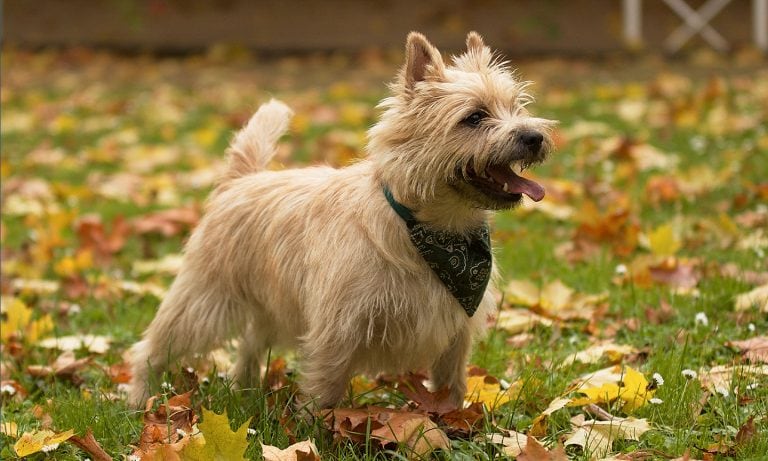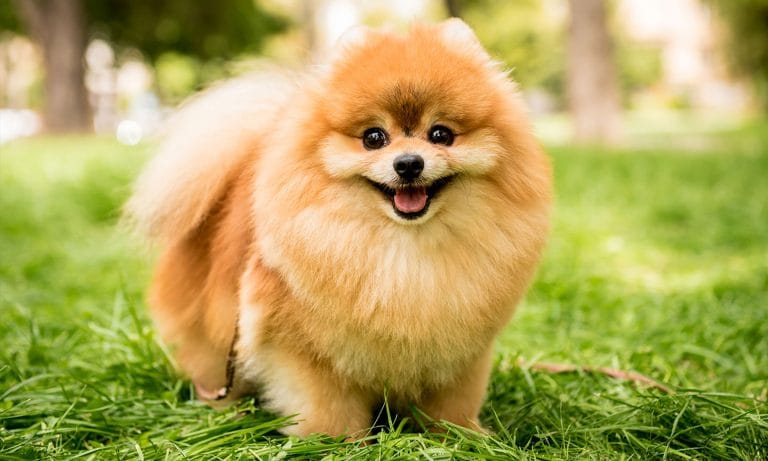Silkies are smart and funny little dogs with gorgeous locks of fur—and they know it. So, if you’re used to having the best hair in your crowd, get ready to take a back seat. Silkies don’t always want to be center stage, though. They just want to be the center of your world—and that means being wherever you are: in the living room, in the bathroom or even out running errands. For a small dog, they’ll fill up your home with a lot of life—and noise. These pups like to bark! They’ll let you know when neighbors walk by… or a cat comes around… or even when leaves blow by. And they’ll let you know when you’re late with dinner. But this sweet little dog is the perfect friend for paling around and guaranteed to bring out the sunshine on any cloudy day.
Breed Snapshot
Temperament:
Smarty PantsJoyfulChattyCoat Color:
Blue Silver And TanGray And TanSilver And TanSilver Black And TanBlue And TanBlack And Tan
Best For
Lively and spirited, Silky Terriers are best for pup parents and families who are lively but not always on the go. This affectionate, adaptable, pint-sized dog breed can thrive in homes big and small, and they do well with other dogs, too, as long as they're properly socialized.
Silky Terrier Temperament
Silky Terriers love being with their people, whether hanging out at home, running errands or going into the office with you. They can suffer from separation anxiety, so if you’re going to be gone for long, consider checking them into doggy daycare or arranging for a neighbor or pet sitter to swing by for some playtime.
This pup has a sparkly personality and loves to play and will perform all sorts of tricks for a treat. But they do have that traditional “terrier temperament,” which is feisty and bold. These traits endear them to their families, but without proper training and exercise, their boldness and feistiness may look a lot like stubbornness and attitude.
With proper socialization and training, these pups do well with kids and other dogs. This breed isn’t known for being aggressive or biters, but they will defend themselves if they feel threatened. So, it’s a good idea to supervise them around small kids and babies (a Silky may misread a toddler’s quick movements, squeezy hugs and squeals and try to protect themselves). It’s also important to ensure children are taught how to properly interact with dogs.
It might surprise you, but Silkies have a high-prey drive. These dogs are born hunters and were bred to hunt vermin (mostly rats and snakes). So, they’ll chase cats and other small animals. But a pup who’s had a full day of exercise and play is just too tired to chase the neighbor’s cat out of your backyard.
Silkies are known for their barking skills. If it was an Olympic sport, Silkies would take home the gold every time. This trait makes them excellent watchdogs. But know that, while you can teach them to bark less often, you’ll never train the bark completely out of them.
Silky Terrier dogs are very intelligent, so be sure to engage their brains as well as their bodies. Interactive toys and dog sports like agility are great ways to keep their active minds busy and out of trouble.
How to Care for a Silky Terrier
The Silky Terrier breed is happiest when they’re with you, which gives you plenty of time to bond with your pup while caring for them. To keep their coat, well, silky, you will spend a lot of time brushing and combing those tresses. But Silkies shed hardly at all, so you won’t be vacuuming up large quantities of hair every week. This small dog breed has a lot of energy, but because they’re tiny, it doesn’t take much to wear them out. And they love pleasing their people, and they take quickly to training—you’ll just have to navigate that stubborn streak common to pups like the Silky.
Silky Terrier Health
Silky Terriers have a lifespan of 13-15 years and have a few health issues. It’s important pup parents know these potential health problems, so they can keep their dog healthier for longer.
- Collapsing Trachea: Collapsing trachea occurs when the cartilage rings for the trachea become floppy or weak and can flatten, making it hard to breathe. Treatments for a collapsed trachea range from pain medications to anti-inflammatories and weight loss. In severe cases, surgery may be needed. When walking a dog with collapsing trachea, using a harness instead of a neck collar is recommended so as not to put additional pressure on the neck.
- Cataracts: Silkies tend to be especially prone to cataracts as they age. Cataracts cause blindness and may be corrected with surgery.
- Patella Luxation: Luxating patella occurs when the kneecap slips out of place. This can cause bunny hopping, lameness, pain and arthritis. Treatment may include weight management, joint supplements or, in severe cases, surgery.
- Legg-Calve-Perthes: This potentially genetic orthopedic condition involves degeneration of the femoral head (ball in the ball and socket of the hip joint) resulting in lameness and pain. X-rays can confirm it, and surgery is often needed to treat it.
- Epilepsy: Epilepsy is a seizure condition that typically starts between 6 months and 5 years of age. While there is no cure, most dogs can be successfully managed with daily medications.
- Endocrine Disease: Silky terriers may be prone to diabetes mellitus and Cushing’s disease. Both are endocrine diseases that can result in increased drinking and urinating, increased appetite and lethargy. If you suspect your pet may have one of these conditions, please make an appointment with your vet right away for bloodwork.
- Pancreatitis: Pancreatitis is the inflammation of the pancreas and is a potentially life-threatening condition that Silkies may be more prone to than other dogs. Signs of pancreatitis include frequent vomiting, diarrhea, loss of appetite, dehydration and lethargy. Depending on the severity, your vet may treat it immediately with hospitalization on IV-fluid therapy, then manage it long-term with a low-fat diet.
Silky Terrier History
No one likes to be mistaken for their family member, so let’s get it straight from the beginning: Silky Terriers are not the same as Yorkshire Terriers. How can you tell them apart? For one, Silky Terriers (aka the Australian Silky Terrier) are bigger than Yorkies. Silkies also come in a range of blues (silvery, steel gray and dark gray), while Yorkies are only dark gray and tan. Thirdly, they come from opposite sides of the world: Yorkies hail from Great Britain, while Silky Terriers originated in Australia.
Silkies were created in the late 19th century when the native Australian Terrier was crossed with a Yorkshire Terrier. (There may be other terrier breeds lurking in their ancestry, but those can be debated.) The Sydney Silky Terrier was primarily developed to become companion pups, but these dogs proved to be great at controlling vermin on farms. (Great looks and rough-and-tumble!)
In 1954, “This Week” magazine featured a Silky on the cover, and America was won over. In 1955, the Sydney Silky Terrier Club of America was formed. That same year, their name changed in Australia to the Australian Silky Terrier, and the dog became the Silky Terrier in the United States. The American Kennel Club recognized the Silky Terrier in 1959.
Are you looking to add a Silky Terrier to your family? You can find reputable breeders on the AKC’s website. The cost for a puppy is between $1,000-$2,000. But for that price, you’re likely getting a pup who’s been screened for health and temperament issues and may come with pedigree papers. If you’d like to adopt a pup, contact Silky Terrier rescues or keep an eye out for the breed at your local animal shelter. You can also search Chewy’s database of adoptable dogs in your area.
FAQs
Do Silky Terriers shed?
Silky Terriers hardly shed at all. But that doesn’t mean you can skip on their grooming! Regular brushing and monthly baths go a long way to keeping their hair in tip-top shape.
How long do Silky Terriers live?
Silky Terriers live about 13-15 years, which gives you a very long time to love on this adorable pup.
How big do Silky Terriers get?
Silky Terriers do not get very big… unless you’re comparing them to their Yorkie cousins. Then they’re big. Silkies usually weigh around 10 pounds, while Yorkies top out at 7 pounds.
Do Silky Terriers bark a lot?
Yes, Silky Terriers bark a lot. They’ll bark at everything that moves, and a few things they’re sure are about to move. You will never train your Silky into silence, but a well-trained pup can be taught to hush.
What are the most common Silky Terrier mixes?
- Silky Terrier-Yorkie mix (Silky Terrier Yorkie)
- Silky Terrier-Maltese mix (Silkese)
- Silky Terrier-Chihuahua mix (Silky Chi)
- Silky Terrier-Poodle mix (Pookly)
- Silky Terrier-Shih Tzu mix (Silky Tzu)
Note: These are not purebred dogs but mixed breeds.

Top Takeaways
The Silky Terrier is a spunky dog who’s ready to worm their way into your heart. Sure, they bark a lot, and you’ll be brushing their hair daily, but this whip-smart dog is eager to please and just wants to be everywhere you are. What more could you ask for in a BFF?
Expert input provided by Dr. Kyle Fugett, DVM, owner of Animal Medical Center in Rogers, Arkansas; Melinda Robles, CDPT-KA, owner of Elite Pet University in Fayetteville, Arkansas; and Hannah Manaserah, owner of Lucky Dog Canine Grooming in Fayetteville, Arkansas.
Breed characteristic ratings provided by veterinarian Dr. Sarah J. Wooten, DVM, CVJ, a veterinarian at Sheep Draw Veterinary Hospital in Greeley, Colorado; dog trainer and behavior consultant Irith Bloom, CPDT-KSA, CBCC-KA, CDBC, owner of The Sophisticated Dog, LLC, in Los Angeles; and certified animal behavior consultant Amy Shojai, CABC, in Sherman, Texas.
The health content was medically reviewed by Chewy vets.

Search for Adoptable Silky Terriers Near You
Female Names
- Bella
- Lily
- Sophie
- Rosie
- Zoey
- Mia
- Chloe
- Lola
- Luna
- Violet
Male Names
- Max
- Milo
- Rocky
- Buddy
- Cooper
- Charlie
- Oliver
- Finley
- Prince
- Chewy
Share:
